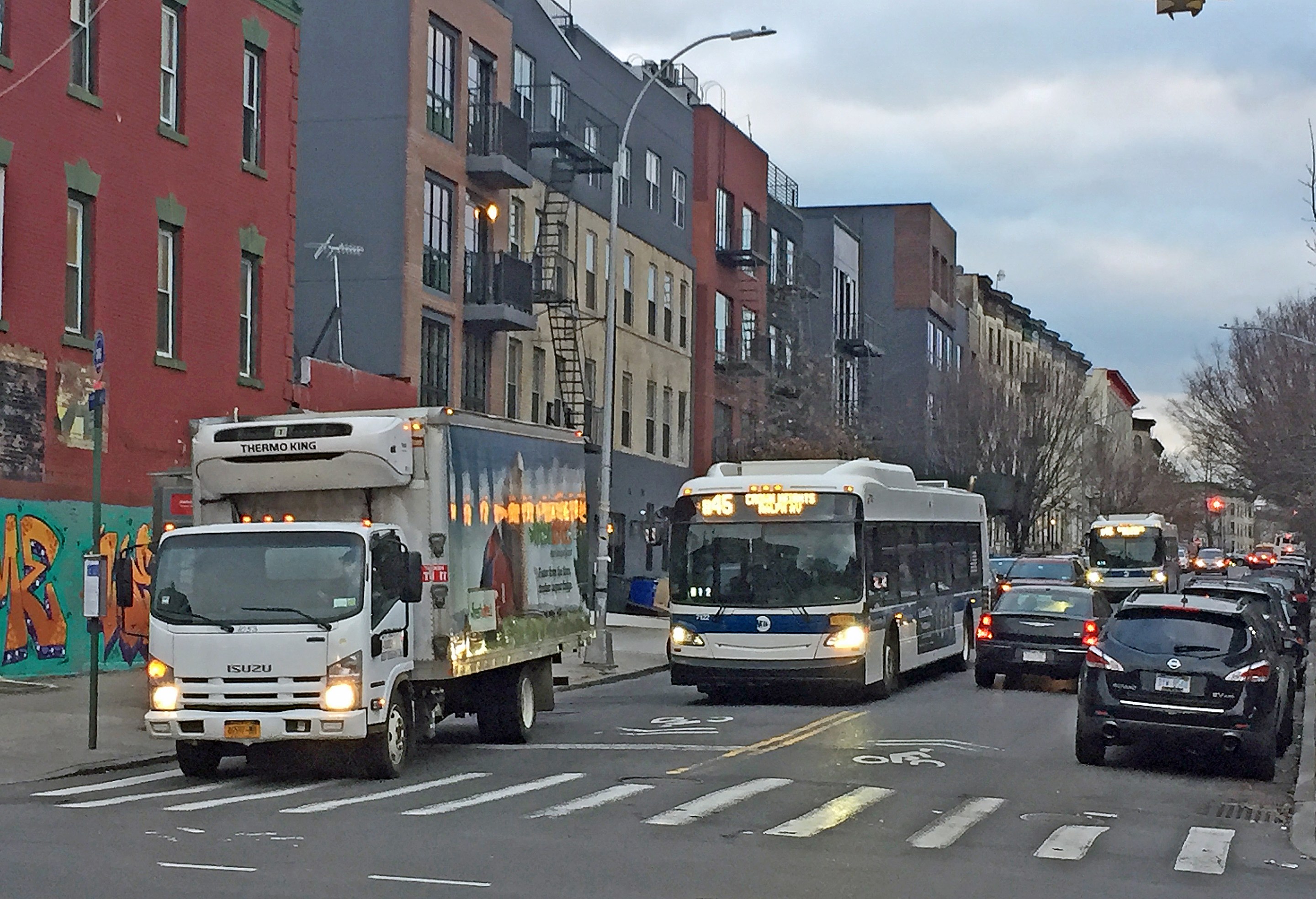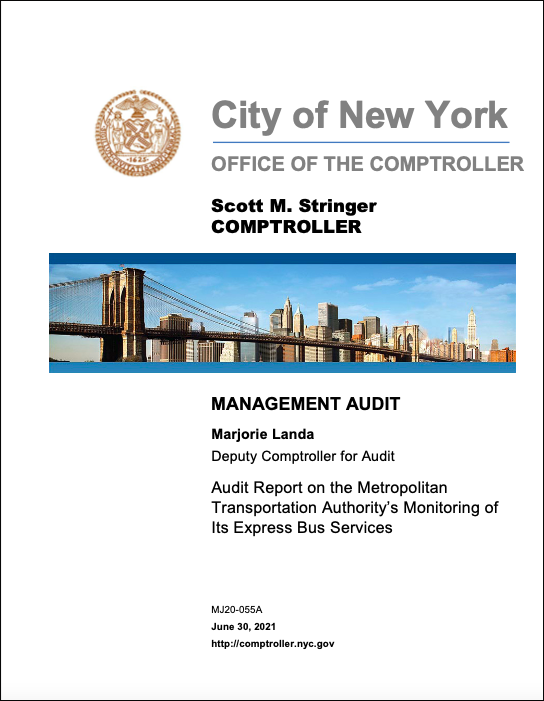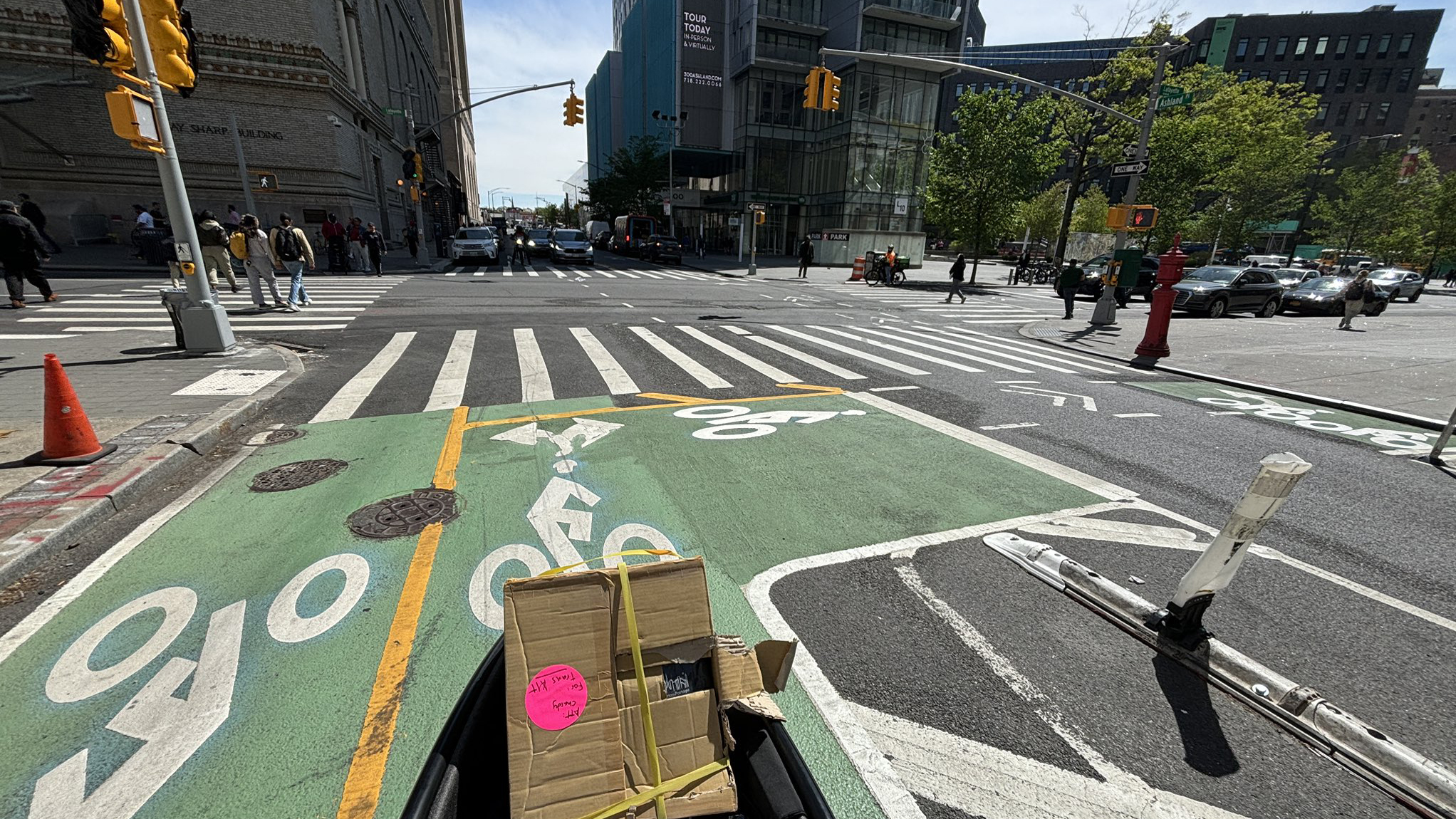The MTA does a poor job assessing the performance of its express bus system and considers it good enough if a bus line has an on-time rate of 60 percent, according to a new audit by Comptroller Scott Stringer, who raised "significant issues" with the MTA's monitoring of express buses.
According to the new audit [PDF], the MTA has nine "performance indicators" for assessing its express bus system — but the MTA has "not set goals for measuring ... actual performance" for six of those nine indicators, which include such things as on-time performance, the percentage of buses that actually arrive, bus speeds, average wait time for customers beyond the scheduled wait time [see table 1].
Two of the three indicators for which there are goals — wait assessment and bunching performance — "do not appear to provide particularly useful information about express bus service," the comptroller's audit said.
Perhaps most alarming, the on-time performance for the express bus system, which has 300 routes and carries 50,000 people a day, is set at "a modest" 60 percent, according to the audit. "By setting such a low bar for satisfactory on-time performance ... any current customer dissatisfaction with the on-time performance of express bus service will remain."
On-time performance is not released publicly, the audit added. And the MTA does not inform customers about bus delays on specific routes in real time (though it does inform the public about system-wide issues).
The audit recommended that the MTA find better performance metrics than bunching and wait assessment to better reflect "the dynamics of express bus service ... and enables customers to find out whether their express buses are running according to their published schedules." And the agency should modify its schedules if the buses' performance continues to not live up to said schedule. The agency agreed with those two recommendations.
Stringer's team also recommended that the MTA raise the goal for on-time performance. The agency disagreed, citing the "dynamic environment" in which express buses operate, including weather and traffic.
A key part of assessing express bus performance would be fixing the problem going forward — but Stringer's audit suggested that this is a particularly weak area for the MTA. Yes, the agency has established "a process that enables it to track performance," but when Stringer's auditors asked the MTA for any evidence that its Road Operations team had fixed a bad schedule or recommended changes to the roadways carrying four slow bus routes, MTA officials were forced to admit, "there were no recommendations brought forth for any MTA Bus routes" in 2019 (one of the years in question).
The four worst routes were:
- BXM11: on-time performance of 46 to 67 percent.
- BM2: on-time performance of 43 to 49 percent.
- QM17: on-time performance of 37 to 53 percent.
- SIM8X: on-time performance of 23 to 57 percent.
Overall, agency spokesman Andrei Berman said the MTA does "frequently review and implement route and schedule changes based on all available data, including ridership" and "will continue to explore and share potential additional express bus performance indicators." The agency also noted that on-time performance is not as important a measure of success during peak hours, when buses are more frequent, but admitted that on-time performance is generally important in off-peak periods when there is less service.
Berman also through the city under the bus.
"An important measure of the effectiveness of the bus system is a function of buses’ ability to move amidst congested New York City streets," he added. "To this end, we continue to work with NYC DOT to push for more busways and bus lanes.”
The city has established only one extensive car-free busway during the de Blasio administration — on 14th Street in Manhattan. Since then, the city DOT has added short car-restricted bus-only stretches on Jay Street in Brooklyn, Main Street in Flushing and 181st Street in Upper Manhattan. But two other proposed busways — on Fifth Avenue in Manhattan and Jamaica Avenue in Queens — have stalled.
It's not the first time Stringer has audited the MTA over its express buses and found them wanting. In 2015, he released data showing that many lines had terrible on-time performance.






